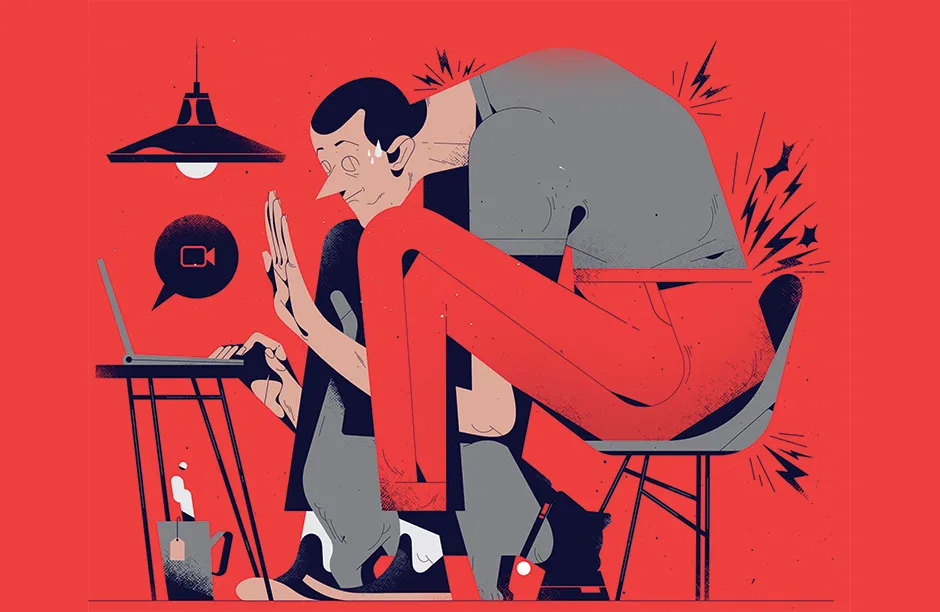There is no ‘right’ way to sit.
Interviewers expect you to sit up straight, and if you’re on a date, leaning forwards can make you seem interested. But when it comes to preventing aches and pains, there is no ‘right way’ to sit.
Slouching isn’t bad.
People think that sitting upright is good and slouching is bad, but it’s a myth. There’s no evidence to support this. A big study in Australia, for example, found that if you follow people through life, the ones who develop chronic back pain aren’t the ones who were slouching or who had poor posture. Genetics, anxiety, sleep patterns and stress all play a role.
Need to know...
- Slouching and bad posture will not cause chronicback pain.
- Standing desks are not a silver bullet for back problems, and can lead to persistent pain.
- To protect your back, stay healthy, sleep well, and keep moving.
Sitting up straight isn’t nice.
If I ask a room of people to show me the right way to sit, they’ll all sit up straight. If I then ask them to stay like that for a while, they’ll tell me they can’t because it’s uncomfortable. We all realise this, yet we’re quick to suggest that sitting upright is the best thing to do. I think this has a lot to do with aesthetics. Sitting upright is more socially acceptable than slouching.
Find the best position for you.
Although bad posture doesn’t cause back pain, if you do experience a bit of pain,
I think it’s perfectly reasonable to play around with your chair and find a better way to sit. Your pain should settle and then you can go back to sitting how you want.

There is no ‘magic chair’ to prevent back pain.
We’ve looked at lots of types of chair, including wobbly versus stable, and with and without backrests. Others have looked at regular desks versus ergonomic work stations. None of these things make much of a difference. If they do help, the effects tend to be short-lived as the novelty soon wears off.
My advice is, if you are pain-free and sitting comfortably, you don’t need a new chair. If you have persistent pain, you could try different chairs and find the one that’s right for you.
Get off your backside.
Prolonged periods of inactivity have been shown to raise the risk of heart disease, diabetes and other conditions, but we need to be careful. In recent times, there’s been a trend to tell people to get up and move around every 30 minutes or so, but this can make those with chronic pain even more aware of their frailty. Instead of forcing people to move at prescribed intervals, I think we should be telling people just to move more.
Read more about sitting:
Standing desks work for some.
Although they’ve become popular and work well for some people, I wouldn’t advise putting them in every office. The evidence tells us that you get as many people with persistent pain from standing all day, as you do from sitting all day.
Look after yourself.
If you want to have a healthy back in later life, try not to think about it too much now. Try to live a healthy life. Get a good amount of sleep, manage your stress and do some exercise that you can afford and enjoy.
